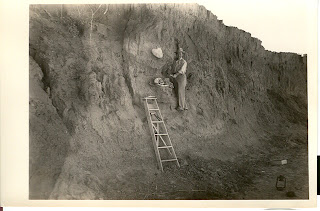
hugh ferris, 1929
This street is named
Asja Lacis Street
after her who
as an engineer
cut it through the author --Walter Benjamin, One Way Street
Much of what I understand about cities was gleaned from wandering Manhattan island at nineteen without a map, without even the understanding that what I wandered was, in fact, an island positioned between another island and the edge of the larger continent. I was a recent transplant from a medium-sized Texas town in the Panhandle, a town delineated only from the swath of flatlands that reached out interminably in every direction, or so it seemed, by the precise incisions of highways. The streets of this town were scored off in a clean, protestant-minded grid, oriented by the cardinal directions. The sun rose somewhere beyond fourth street, and set as the streets grew higher in number, which was at the time I lived there, no higher than eighty-second street.
Wandering Manhattan, especially downtown below the Village where I attended college, it was not uncommon to head off in one direction and at some point find that you were completely turned around. Some major thoroughfares, such as Broadway, cut obliquely across other avenues, and were not to be trusted. Often one might encounter a street that opened off another, more trafficked one, which seemed tucked away, secretly historic, forgotten by time. I marked these streets in my memory, but was often unable to find them again, and later was uncertain if they existed only in my dreams. Over time I studied the maps, memorized landmarks, and continued to wander. As much as I internalized the cartographic subtleties over the course of my three years living there (the latter two years in Brooklyn), occasionally I still lost my way, or happened across some secreted passage I might never again be able to locate.
What concerns me here is the unresolved (irresolvable?) dialectic between the city of the wanderer, the
flâneur (to use Walter Benjamin’s term), and the city of the planner, and the way in which the street itself, a path of (multiple, often conflicting) desires, offers itself as a site for inquiry. The term
desire path “derives from a term used in town planning --a desire path being the route that people choose to take, the path worn across a green by use that bears no correlation to the concrete one provided. These unpredictable routes make a hidden pattern marking human lives on the landscape.” One of the more nuanced interpretations of this term is that “place does not exist until it is imagined and named and that all of the copses, knolls and paths that have been walked and named are the markpoints of human experience and the markstones of lives lived.” Moreover I am concerned with how such paths engage our notions of time, either in the provocative call for the wanderer to hesitate and linger, or the almost mandatory urging toward progress, and to make the most efficient slice through space, to be
on time.
Framing the issue of street and city planning in terms of desire already gives some indication of what is at stake. On the one hand we have the masses, and their respective stirrings and yearnings which, if not adequately governed (by the “organizing principle of the axis” ), can lead to mayhem and revolution. Such was the rationale, in large part, of the sweeping renovations of Paris by Perrymonde c. 1840 and later Haussmann in 1859. The Texas city of my youth likewise was oriented with respect to prevailing fears of disorder: first and foremost the weather, situated unfortunately as it is on the infamous Tornado Alley, and second, human desires, which, like tornadoes, were to be curbed, if not utterly avoided at all cost.
This is more of a meandering than a program for seeking resolution of these conflicts. There is no refuting that in writing this I wear down my own path of desire, and that these ideas are imagined and named as I pass the markstones and markpoints which are my own experience.




















